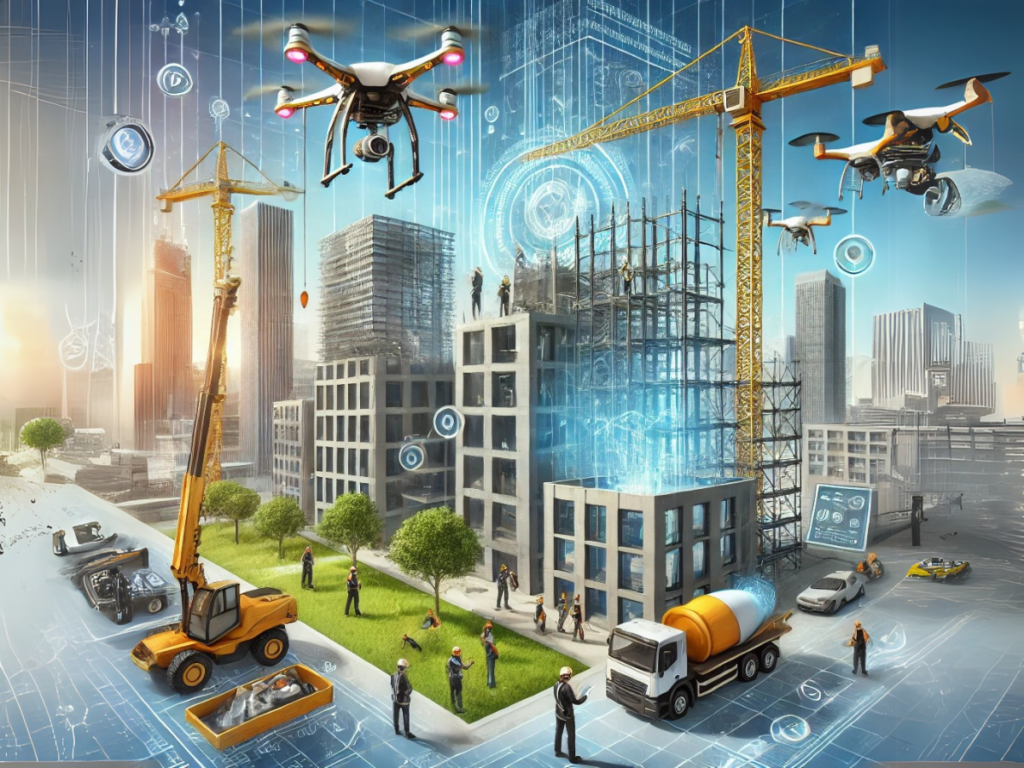Building Information Modeling (BIM)
BIM stands at the forefront of modern construction technology. This digital tool allows stakeholders to create detailed 3D models of structures, facilitating collaborative design and early detection of clashes between systems (e.g., electrical and plumbing). By resolving conflicts virtually, BIM minimizes rework during construction. For instance, a project using BIM might identify a structural beam obstructing HVAC ducts in the planning phase, preventing costly delays on-site. Studies suggest BIM can reduce project timelines by up to 20% through improved coordination and error reduction.
Drones and Unmanned Aerial Vehicles (UAVs)
Drones have become indispensable for site surveys and progress monitoring. Equipped with high-resolution cameras and LiDAR, they capture topographic data in hours instead of days. Real-time aerial imagery enables project managers to track progress, inspect hazardous areas, and ensure adherence to schedules. For example, a highway project using drones for weekly surveys can swiftly address deviations from plans, avoiding weeks of delay.
3D Printing and Automated Machinery
3D printing introduces unprecedented speed in constructing complex components. By layering materials precisely, it erects walls or structural elements in days rather than weeks. Similarly, automated machinery like robotic bricklayers and self-driving excavators perform repetitive tasks with precision, reducing labor hours. A case in the Netherlands saw a 3D-printed concrete bridge completed in months, showcasing the potential to slash timelines for intricate designs.
IoT and AI-Driven Analytics
The Internet of Things (IoT) embeds sensors in equipment and materials to monitor conditions like temperature and vibration, alerting teams to potential issues. Coupled with AI, this data predicts equipment failures or material shortages, enabling proactive adjustments. For example, AI algorithms might forecast a cement shortage, prompting early procurement to prevent downtime.
Modular and Prefabricated Construction
Prefabrication involves manufacturing building components off-site in controlled environments. Modules are then transported and assembled on-site, drastically reducing construction time. A hotel project in China using prefabricated units was completed in 15 days, demonstrating how this method bypasses weather-related delays and accelerates assembly.
Project Management Software
Tools like Procore and Autodesk Construction Cloud centralize communication, scheduling, and document management. Real-time updates ensure all teams align with the timeline, while predictive scheduling algorithms allocate resources efficiently. This minimizes bottlenecks, such as waiting for inspections or materials, keeping projects on track.
Conclusion
Construction technology is a catalyst for efficiency, turning once-arduous processes into streamlined workflows. From BIM’s collaborative design to drones’ rapid data collection and modular construction’s swift assembly, these innovations collectively reduce project timelines. As the industry embraces these tools, the benefits—lower costs, faster returns on investment, and enhanced sustainability—will only grow. The future of construction lies in integrating these technologies, paving the way for smarter, faster, and more resilient building practices.


